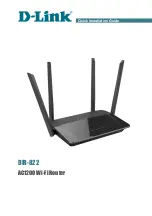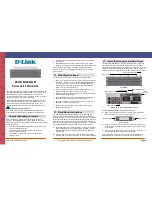
804
Configuring IP Unicast Routing
Configuring IP Addressing
Address Resolution Protocol (ARP) is used to associate IP address with MAC addresses. Taking an IP address as
input, ARP learns the associated MAC address and then stores the IP address/MAC address association in an ARP
cache for rapid retrieval. Then the IP datagram is encapsulated in a link-layer frame and sent over the network.
Encapsulation of IP datagrams and ARP requests or replies on IEEE 802 networks other than Ethernet is specified by
the Subnetwork Access Protocol (SNAP).
Proxy ARP helps hosts with no routing tables learn the MAC addresses of hosts on other networks or subnets. If the
switch (router) receives an ARP request for a host that is not on the same interface as the ARP request sender, and
if the router has all of its routes to the host through other interfaces, it generates a proxy ARP packet giving its own
local data link address. The host that sent the ARP request then sends its packets to the router, which forwards them
to the intended host.
The switch also uses the Reverse Address Resolution Protocol (RARP), which functions the same as ARP does, except
that the RARP packets request an IP address instead of a local MAC address. Using RARP requires a RARP server on the
same network segment as the router interface. Use the
ip rarp-server
address
interface configuration command to
identify the server.
For more information on RARP, see
IP Addressing: ARP Configuration Guide, Cisco IOS Release 15M&T
You can perform these tasks to configure address resolution:
Defining a Static ARP Cache, page 804
Setting ARP Encapsulation, page 805
Defining a Static ARP Cache
ARP and other address resolution protocols provide dynamic mapping between IP addresses and MAC addresses.
Because most hosts support dynamic address resolution, you usually do not need to specify static ARP cache entries. If
you must define a static ARP cache entry, you can do so globally, which installs a permanent entry in the ARP cache that
the switch uses to translate IP addresses into MAC addresses. Optionally, you can also specify that the switch respond
to ARP requests as if it were the owner of the specified IP address. If you do not want the ARP entry to be permanent,
you can specify a timeout period for the ARP entry.
BEFORE YOU BEGIN
Review the
Configuring Address Resolution Methods, page 803
.
Summary of Contents for IE 4000
Page 12: ...8 Configuration Overview Default Settings After Initial Switch Configuration ...
Page 52: ...48 Configuring Interfaces Monitoring and Maintaining the Interfaces ...
Page 108: ...104 Configuring Switch Clusters Additional References ...
Page 128: ...124 Performing Switch Administration Additional References ...
Page 130: ...126 Configuring PTP ...
Page 140: ...136 Configuring CIP Additional References ...
Page 146: ...142 Configuring SDM Templates Configuration Examples for Configuring SDM Templates ...
Page 192: ...188 Configuring Switch Based Authentication Additional References ...
Page 244: ...240 Configuring IEEE 802 1x Port Based Authentication Additional References ...
Page 298: ...294 Configuring VLANs Additional References ...
Page 336: ...332 Configuring STP Additional References ...
Page 408: ...404 Configuring DHCP Additional References ...
Page 450: ...446 Configuring IGMP Snooping and MVR Additional References ...
Page 490: ...486 Configuring SPAN and RSPAN Additional References ...
Page 502: ...498 Configuring Layer 2 NAT ...
Page 770: ...766 Configuring IPv6 MLD Snooping Related Documents ...
Page 930: ...926 Configuring IP Unicast Routing Related Documents ...
Page 976: ...972 Configuring Cisco IOS IP SLAs Operations Additional References ...
Page 978: ...974 Dying Gasp ...
Page 990: ...986 Configuring Enhanced Object Tracking Monitoring Enhanced Object Tracking ...
Page 994: ...990 Configuring MODBUS TCP Displaying MODBUS TCP Information ...
Page 996: ...992 Ethernet CFM ...
Page 1066: ...1062 Using an SD Card SD Card Alarms ...
















































